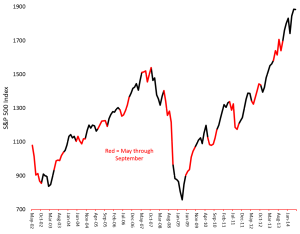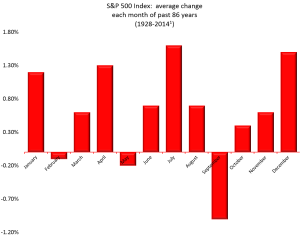Aug. 4, 2014
The SEC’s Office of Investor Education and Advocacy is issuing this Investor Alert to help investors identify potentially fraudulent unregistered offerings.
Under the federal securities laws, a company may not offer or sell securities unless the offering has been registered with the SEC or an exemption to registration is available. If the offering is not registered, it is often called a private placement or unregistered offering. Generally speaking, unregistered offerings are not subject to some of the laws and regulations that are designed to protect investors, such as disclosure requirements that apply to registered offerings. Many companies engage in legitimate unregistered offerings to raise funds from investors. Fraudsters, however, may also use unregistered offerings to conduct investment scams.
If you are presented with an opportunity to invest in an unregistered offering, in addition to thoroughly researching an investment—and the investment professional selling it—you should be on the lookout for these common signs of potential fraud when you are thinking about investing in an unregistered offering.
- Claims of High Returns with Little or No Risk
Promises of high returns, with little or no risk, are classic warning signs of fraud. Every investment carries some degree of risk, and the potential for greater returns comes with greater risk. You should be skeptical of any investment that is said to have no risks.
- Unregistered Investment Professionals
Unregistered persons who sell securities perpetrate many of the securities frauds that target retail investors. Always check whether the person offering to sell you an investment is registered and properly licensed, even if you know him or her personally. An investment professional’s registration, background and qualifications are available through the Investment Adviser Public Disclosure website and FINRA’sBrokerCheck.
- Aggressive Sales Tactics
Scam artists often pitch an investment as a “once-in-a-lifetime” offer to create a false sense of urgency. Resist the pressure to invest quickly and take the time you need to investigate thoroughly before sending money or signing any agreements. Any reputable investment professional or promoter will let investors take their time to do research and will not pressure for an immediate decision.
- Problems with Sales Documents
Avoid an investment if the salesperson will not provide you with anything in writing. A legitimate private offering will usually be described in a private placement memorandum, orPPM. Similarly, sloppy offering documents that contain typographical, spelling, or other errors can be a red flag that the investment could be a scam.
- No Net Worth or Income Requirements
The federal securities laws limit many private securities offerings to accredited investors. Be highly suspicious of anyone who offers you private investment opportunities without asking about your net worth or income.
Accredited investor. An individual is considered an accredited investor, if he or she:
- earned income that exceeded $200,000 (or $300,000 together with a spouse) in each of the prior two years, and reasonably expects the same for the current year, OR
- has a net worth over $1 million, either alone or together with a spouse (excluding the value of the person’s primary residence or any loans secured by the residence (up to the value of the residence)).
|
- No One Else Seems to be Involved
Be cautious if no one besides the salesperson appears to be involved in the deal. Usually, brokerage firms, accountants, law firms, or other third parties are involved in a private offering. Similarly, be cautious if you are told not to contact someone who is supposedly involved with the investment.
- Sham or Virtual Offices
A company may establish a mailing address within a state in which it has no legitimate operations in a fraudulent attempt to qualify for an exemption from registration. If the company’s corporate address is a mail drop and you are unable to verify that the company has any actual operating presence (such as a headquarters building, plant or other physical operations) within the same state, be wary.
- Not in Good Standing
Any company, including limited liability companies and limited partnerships, seeking your investment should be listed as active or in good standing in the state where it was incorporated or formed. Every company must file and pay annual taxes in order to maintain its good standing. Each state, usually under the offices of its Secretary of State, maintains a publicly accessible online database of its companies. You should be wary if the company you are being asked to invest in can’t be found in the records of the state it claims to have been formed in or if it’s not listed as active or in good standing.
- Unsolicited Investment Offers
You should be very careful when you receive an unsolicited – meaning you did not ask for it – investment offer. Whether from a total stranger or from a friend, trusted co-worker, or even family member, always consider the motivation of the person offering the investment. Fraudsters often exploit the trust and friendship that exist in groups of people who have something in common, sometimes called affinity fraud. You should be especially suspicious if you are told to keep the investment opportunity confidential or a secret.
- Suspicious or Unverifiable Biographies of Managers or Promoters
To appear legitimate, fraudsters may represent that they have had a successful career in the relevant industry when nothing could be further from the truth. Don’t just take the promoter’s word on his or her background. Try to independently verify any claims, including by asking for references or conducting a simple Internet search. On the other hand, even if the promoter is truthful about his or her background, if the promoter appears to lack relevant experience, consider this a red flag as well.
What You Can Do to Help Protect Yourself
- Check the background of the investment professional.
Checking the background of an investment professional is easy and free. Details on an investment professional’s background, qualifications and disciplinary record, if any, are available through the Investment Adviser Public Disclosure website and FINRA’sBrokerCheck. If you have any questions on checking the background of an investment professional, call the SEC’s toll-free investor assistance line at (800) 732-0330. You also should search the Internet for the investment professional’s name and past business experience. Don’t be afraid to ask questions about what you find.
- Understand the Investment Strategy
There are a wide variety of investments. Make sure you understand the level of risk involved and think about whether the investment is suitable for your personal investing goals, time horizons and risk tolerance. Investment pitches that are vague about who is involved in the transaction or where the money is going could be a red flag. Salespeople may try to explain away this lack of specificity by stating that the details are too technical or complex for non-experts to understand. If a promoter is unable to provide answers to the questions you ask, you should take that as a warning sign. If you can’t understand it, consider carefully whether the investment is right for you.
- Be Aware of Tactics of Con Artists and Fraudsters
Research shows that con-artists are experts at the art of persuasion, often using a variety of influence tactics tailored to the vulnerabilities of their victims. Common tactics includephantom riches (dangling the prospect of wealth, enticing you with something you want but can’t have), source credibility (trying to build credibility by claiming to be with a reputable firm or to have a special credential or experience), social consensus (leading you to believe that other savvy investors have already invested), reciprocity (offering to do a small favor for you in return for a big favor), and scarcity (creating a false sense of urgency by claiming limited supply).
Unbiased resources are available to help you make informed investing decisions. Whether checking the background of an investment professional, researching an investment, or learning about new products or scams, unbiased information can be a significant advantage for investing wisely. A good starting point for this information is the SEC’s Investor.govwebsite.
Additional Resources Available on SEC.gov
For basic investment guidance, see our publication, Ask Questions.
For guidance on choosing an investment professional, review our Investor Bulletin, Top Tips for Selecting a Financial Professional.
To learn more about unregistered securities offerings, read:
Contact the SEC
If you have questions about checking the license or registration status of an individual or firm, submit a question to the SEC or call the SEC’s toll-free investor assistance line at (800) 732-0330 (dial 1-202-551-6551 if calling from outside of the United States).
Report a problem concerning your investments or report possible securities fraud to the SEC.
Stay Informed


